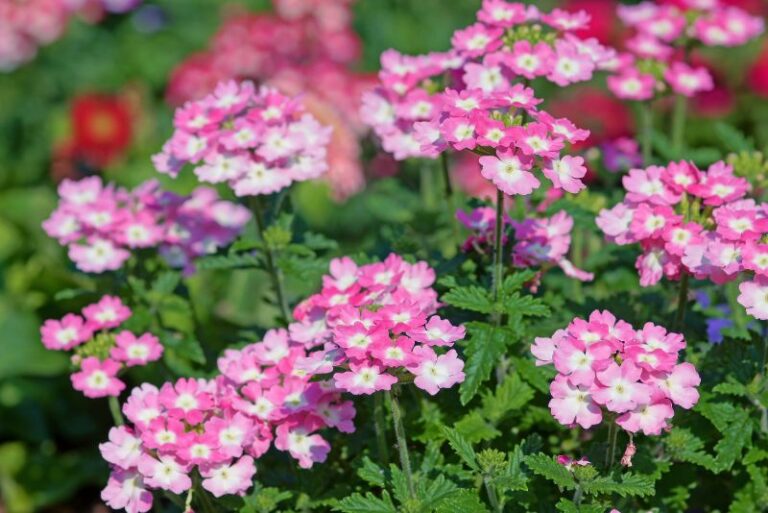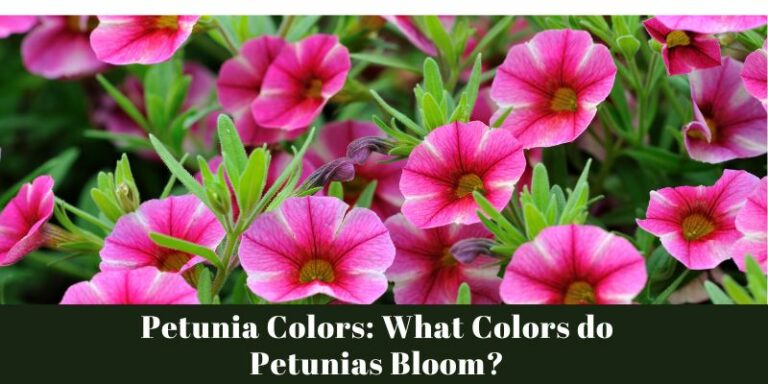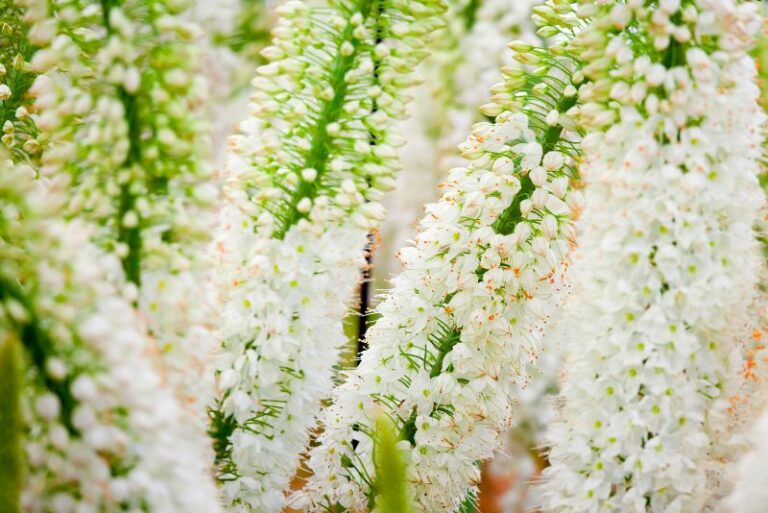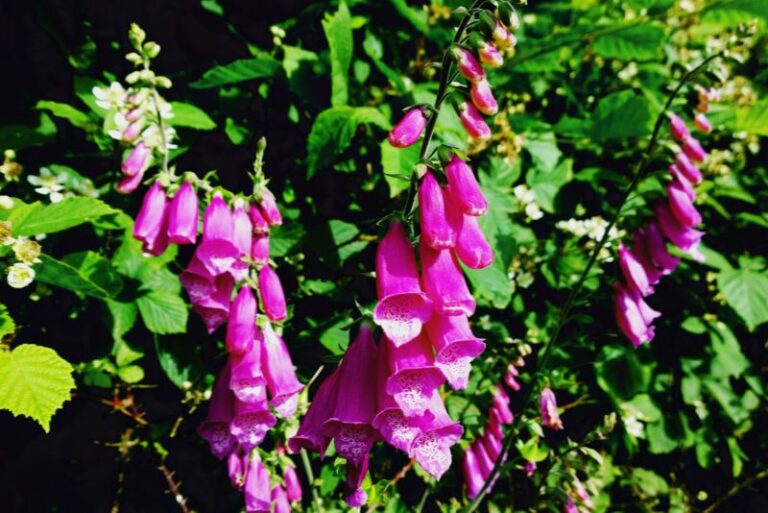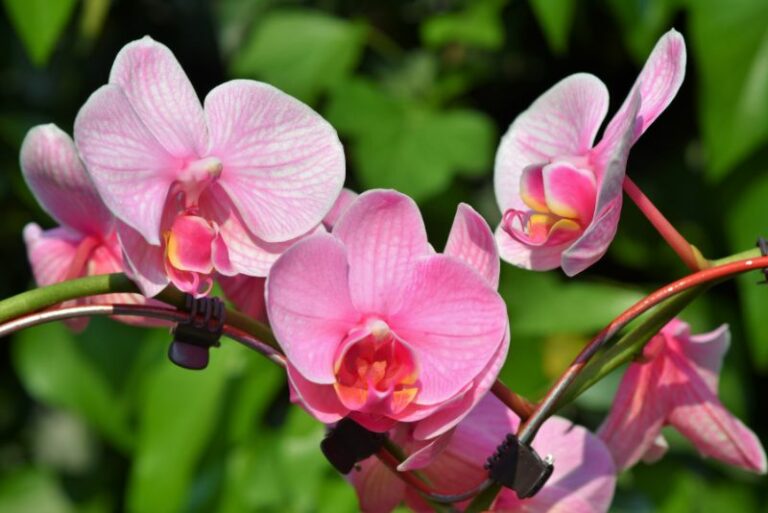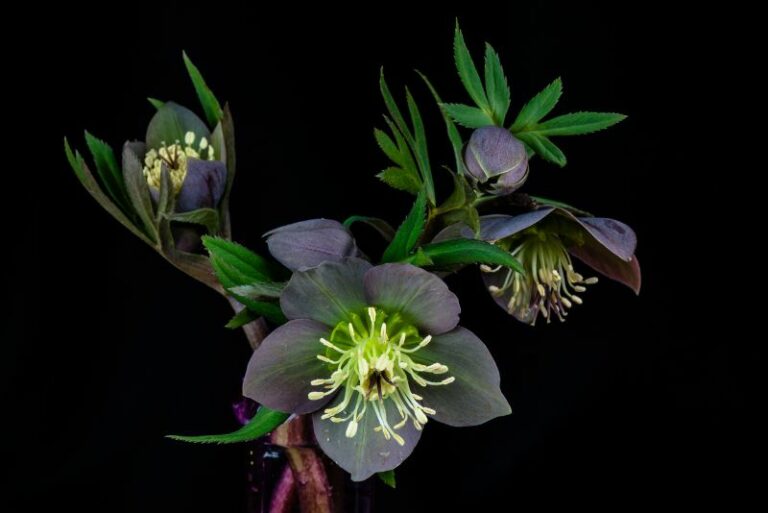How To Plant, Grow, and Care for Lantana Plants
Lantana plants are a popular choice for gardeners due to their beautiful flowers and low maintenance needs. They also attract butterflies, making them a delightful addition to any outdoor space. In this guide, we will take you through step by step on how to plant, grow, and care for lantana plants in your own garden.
Lantana Plants Overview
Here is an overview table for Lantana Plants:
| Attributes | Details | Planting and Care |
|---|---|---|
| Plant type | Perennial (or annual in cooler climates) | Attracts |
| Season | Summer to frost | Hardiness Zone |
| Pests | Whiteflies, aphids | Plant with |
| Slugs Family | Not Applicable | Planting depth |
| Exposure | Full Sun | Watering Requirement |
| Diseases | Powdery mildew, root rot | Don’t plant with |
| Genus | Lantana | Height |
| Maturity date | Varies, often blooms all season | |
| Maintenance | Low | |
| Species | L. camara, L. montevidensis, etc. | |
| Growth rate | Fast | |
| Soil type | Well-drained | |
| Native area | Central and South America | |
| Plant Spacing | 2 – 3 feet apart |
Please note that certain details may vary depending on the specific variety of lantana. Always refer to the specific planting and care instructions provided when you purchase your plants.
All About Lantana Plants
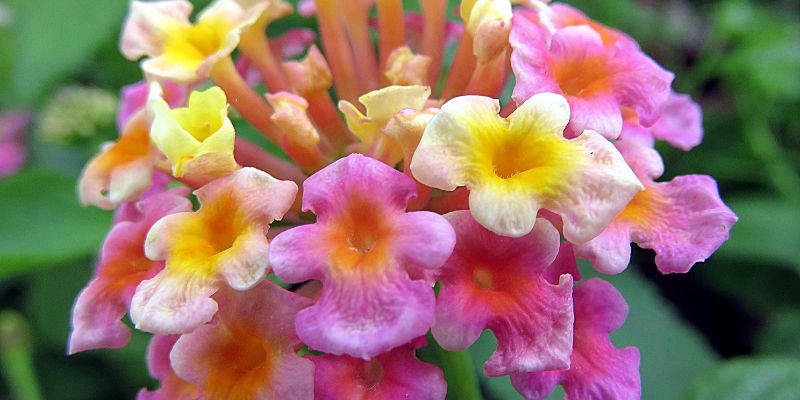
Lantanas (Lantana camara) are vibrant, versatile shrubs known for their ability to thrive in warm climates and their resistance to pests and drought, making them a favorite among novice and expert gardeners alike. These perennials are distinguished by their cluster of small, colorful flowers, which can come in shades of red, orange, yellow, blue, white, and purple. Their flowers often change color as they mature, adding a dynamic quality to the plant’s visual appeal.
These hardy plants typically reach a height of one to two feet, but can stretch outwards up to four feet. The foliage of lantana plants can be just as eye-catching, with its vibrant green leaves that release a distinctive aroma when crushed. This scent is a deterrent to many pests, offering an added layer of natural pest resistance.
Beyond ornamental use, lantanas have practical applications as well. They are often recommended for xeriscaping—a landscaping method that reduces or eliminates the need for supplemental water from irrigation—and are ideal for soil stabilization in areas prone to erosion. Moreover, the prolific blooming of lantana plants ensures a long-lasting display of color from spring until fall, providing continuous visual interest and sustenance to pollinators like butterflies and hummingbirds.
However, care must be taken when handling lantana plants, as they are considered toxic when ingested. Domestic animals and small children should be kept away, and gardeners are advised to use gloves when pruning or handling these plants.
To ensure optimal health and blooming, lantanas require full sun exposure and well-draining soil. While these plants are tolerant of a wide range of soil types, they perform best in soil that is not overly rich in organic matter, which can encourage leggy growth and dampen flowering potential. With the right care, lantana plants can be a durable and radiant feature in any garden, evoking a vibrant, tropical atmosphere.
Lantana Plants Varieties
Lantana plants come in a myriad of varieties, each with its own unique history, appearance, fragrance, and shared traits. As a species, Lantana camara originated in the tropical Americas and Africa but has since become naturalized in various warm climates around the world. This widespread cultivation has led to the development of numerous hybrids and varieties tailored to different landscaping needs and aesthetic preferences.
One popular variety is ‘Miss Huff’, known for its impressive cold hardiness and ability to return from the roots after freezing temperatures. With vibrant flowers in shades of orange, pink, and yellow, ‘Miss Huff’ can grow up to four feet tall and wide, making it a substantial addition to any garden.
Another variety that garners attention is the Bandana® series, which features plants that are more compact than the typical lantana. They come in a plethora of colors, including ‘Bandana Cherry,’ ‘Bandana Red,’ and ‘Bandana Yellow.’ Their dense, mounding habit makes them ideal candidates for container gardening or as a colorful groundcover.
The Landmark™ series boasts varieties such as ‘Landmark Citrus,’ ‘Landmark Peach Sunrise,’ and ‘Landmark Rose Glow,’ each offering a distinctive blend of flower colors that evolve over time. Not only are they known for their floriferous nature, but they also have a notably mounded to slightly trailing growth habit, which is excellent for hanging baskets and mixed borders.
Attention should also be given to the Lucky™ series, which includes ‘Lucky White,’ ‘Lucky Yellow,’ and ‘Lucky Lavender.’ These compact varieties tend to bloom earlier than others and are recognized for their almost non-stop flowering throughout the growing season.
Regarding their scent, many lantana varieties have a mildly pungent aroma emanating from their foliage, particularly when the leaves are brushed or crushed. This characteristic smell tends to repel deer and other herbivores, making lantanas an excellent choice for gardeners dealing with wildlife intrusions.
While each variety has its distinct visual appeal, they all share the quintessential hallmarks of the Lantana camara species: clustered flower heads that change color as they age, a love for full sun, and a robustness that makes them a staple in warm climate gardens across the globe. Regardless of the variety, all lantanas create a kaleidoscope of color that attracts a host of pollinators, enhancing the biodiversity of any outdoor space.
Lantana Plants Care Procedures
Light and Temperature Requirements
When caring for lantana plants, understanding their light and temperature needs is crucial for vibrant growth and blooming. Lantanas are true sun worshippers, requiring full sun for at least 6 to 8 hours a day. Adequate sunshine is the secret to their success, directly influencing the profusion of blooms and the brightness of their colors. Place them in a spot where they will receive ample sunlight throughout the day – southern exposures are typically ideal in the Northern Hemisphere.
As for temperature, lantanas thrive in warm conditions and are hardy in USDA zones 9 to 11. They can also be grown as annuals in cooler climates, as they tolerate a wide temperature range once established. However, they do not withstand freezing temperatures well. If you live in an area with cold winters, it’s important to recognize that lantanas are sensitive to frost. To ensure the survival of these plants in such regions, they must be brought indoors or treated as annuals. If grown in pots, simply move them to a sheltered location before the first frost.
Moreover, in the transition periods of spring and fall, be mindful of night-time temperature drops. Lantanas need to be shielded from sudden cold snaps, which may hinder their growth or even cause damage to the plant. During sweltering summer days, while lantanas handle the heat admirably, providing afternoon shade in regions with intense heat can help prevent scorching and reduce water stress.
By respecting these light and temperature guidelines, your lantana plants will reward you with their enduring beauty and resilience, becoming a highlight in your garden’s landscape.
Water and Humidity Requirements
For lantanas to flourish, a proper watering regimen balanced with appropriate humidity levels is essential. These plants prefer a moderate amount of water, and their drought-tolerant nature allows them to forgive occasional forgetfulness. However, to establish a strong root system, especially during their growing season, regular watering is beneficial.
When watering lantanas, aim for a deep and thorough watering that moistens the entire root zone. Allow the soil to dry out somewhat between waterings to prevent root rot, a condition these plants are susceptible to if left in waterlogged soil. The frequency of watering will depend on several factors, including the climate, the time of year, and the plant’s environment (whether in a container or in the ground). As a rule of thumb, water potted lantanas more frequently, as containers tend to dry out faster.
The ideal soil moisture level for a lantana is akin to a wrung-out sponge – damp, but not sopping wet. During the hottest part of the summer, you may need to water more frequently, while in cooler weather or when the plants are not in active growth, less water is required.
In terms of humidity, lantanas are not demanding. They naturally thrive in humid climates due to their tropical origins but adapt well to areas with lower humidity levels. It’s rare for these plants to require any additional humidity in the garden setting.
If you’re growing lantanas indoors or in particularly dry climates, you can occasionally mist the plants to provide some humidity and to keep the foliage clean and free from dust. Nonetheless, ensure that the plants have good air circulation to prevent fungal diseases that can be exacerbated by excessive moisture on the leaves.
To summarize, water lantanas when the top inch of soil feels dry to the touch, provide well-draining soil to prevent waterlogging, and remember that a little dryness won’t hurt them, as they are built to withstand some drought. With mindful watering practices, your lantanas will be set to offer a season full of vibrant beauty.
Soil and pH Requirements
The right soil is a critical component for the health and longevity of lantana plants. Lantanas perform best in well-draining soil, as they are susceptible to root rot in conditions that retain excessive moisture. A soil mixture that includes organic matter like compost or peat moss can increase its draining capacities and support a healthy root system.
Lantans are not overly particular about soil pH, generally thriving in a range from slightly acidic to slightly alkaline (pH 6.0 to 7.5). To determine the pH of your soil, conduct a soil test using a test kit available at your local garden center. If your soil is too acidic (below 6.0), you can raise the pH by adding lime. Conversely, if it is too alkaline (above 7.5), incorporate sulfur or aluminum sulfate to lower the pH.
Preparing the Soil
To prepare the soil for planting lantanas, follow these steps to create an optimal growing environment:
- Location Selection: Choose a location that receives full sun as mentioned in their light requirements.
- Soil Testing: Test the pH of the soil and adjust as necessary.
- Soil Amendment: Incorporate organic matter to improve soil structure. Compost, aged manure, or peat moss can enhance nutrient content and improve drainage. Aim for a mixture that will hold moisture without becoming waterlogged.
- Tilling: Till the soil to a depth of 12 to 15 inches to loosen it. This will allow the lantana roots to grow freely and access the necessary nutrients.
- Mixed Beneficial Compounds: If the native soil is particularly compacted or lacks nutrients, consider mixing in a balanced, slow-release fertilizer to give the plants a good start. Be careful not to over-fertilize, as too much can inhibit flowering.
- Watering: Prior to planting, water the soil thoroughly. This will help settle the soil and ensure it is moist for the new lantana plants.
- Planting: Dig a hole twice as wide and just as deep as the root ball of the lantana plant. Gently place the plant in the hole and fill around it with the amended soil, firming it down around the base of the plant.
- Mulching: After planting, apply a thin layer of mulch around the base of the plant to help retain moisture and prevent weed competition. Keep the mulch a few inches away from the plant stem to prevent rot.
By following these guidelines for soil, pH, and soil preparation, your lantana plants will have a strong foundation to grow healthy and vibrant, contributing to a beautiful and biodiverse garden display.
Fertilizer Requirements for Lantana Plants
Optimal fertilization is key to achieving the lush, vibrant blooms for which lantanas are known. While lantanas are not heavy feeders, following a thoughtful fertilization routine will support vigorous growth and prolific flowering. Let’s go through the care procedures for fertilizing lantana plants:
- Type of Fertilizer: Select a fertilizer that is balanced, such as a 10-10-10 or 20-20-20 formulation. These numbers represent the percentages of nitrogen, phosphorus, and potassium, respectively – nutrients essential for the plant’s growth, bloom production, and overall health. Alternatively, you can opt for a slow-release granular fertilizer that provides a steady supply of nutrients over time.
- Fertilizing Schedule: Lantanas should be fertilized in early spring as they begin active growth and periodically through the growing season. However, avoid over-fertilizing, as this can lead to lush foliage at the expense of blooms. Fertilize them every 4-6 weeks during the growing season, but ease up as autumn approaches to allow the plants to prepare for winter naturally.
- Application Method: Apply the fertilizer according to the manufacturer’s instructions. For granular fertilizers, sprinkle the granules around the base of the plant, extending to the dripline. Ensure that the fertilizer does not touch the foliage or stems to avoid burning the plant. Water thoroughly after applying fertilizer to help dissolve and distribute the nutrients into the soil.
- Fertilizing Potted Lantanas: Container-grown lantanas require more frequent fertilization due to nutrients being flushed out with regular watering. Use a liquid fertilizer for potted lantanas, which can be mixed with water and used to irrigate the plants. This can be done every two to three weeks during the growing season.
- Organic Alternatives: For gardeners who prefer organic gardening practices, well-composted manure or a compost tea can be an excellent alternative. These organic options provide a broad spectrum of nutrients while also improving soil structure. Apply organic amendments in the spring and, if needed, a lighter application in midsummer.
- Monitoring Plant Response: Observe your lantanas’ response to fertilization. If the plants are not blooming as expected or exhibit signs of distress, such as yellowing leaves or a decrease in growth rate, adjust your fertilization regimen accordingly. In some cases, reducing the amount of nitrogen or changing the type of fertilizer can encourage more flowers instead of just foliage.
- Winter Care: In regions where lantanas are perennial, cease fertilization in early autumn to help plants harden off before the colder weather sets in. Excessive fertilization late in the season can lead to tender new growth that is susceptible to frost damage.
By adhering to these fertilizer care procedures, your lantana plants should thrive and produce an abundant display of colorful blooms throughout their growing season. Remember to always follow packaging instructions and local guidelines for fertilizer use, and consider the specific needs of your garden environment when planning your fertilization strategy.
Repotting Lantana Plants
Proper repotting is crucial for maintaining healthy lantana plants, especially when they outgrow their current containers or need refreshing soil. The following care procedures offer a step-by-step guide to repot your lantana plants successfully:
- Select the Appropriate Time: The best time to repot lantanas is in the spring before they begin their active growth period. This allows the plants to quickly recover from the shock of being transplanted.
- Choose a Suitable Pot: The new pot should be one size larger than the current one, with adequate drainage holes to prevent waterlogging. Avoid pots that are significantly larger, as excess soil can retain moisture and lead to root rot.
- Prepare the Potting Mix: Use a high-quality potting mix that ensures good drainage and aeration. You can make your own by mixing equal parts potting soil, peat moss, and perlite or sand.
- Remove the Plant: Gently take the plant out of its current pot. Loosen the roots carefully with your fingers. If the roots are tightly bound in a root ball, make a few vertical cuts to encourage outward growth.
- Trim if Necessary: Trim away any dead or damaged roots to promote healthier growth.
- Add Soil to the New Pot: Place a layer of fresh potting mix at the bottom of the new pot.
- Replanting: Position the lantana in the center of the pot and fill in around the plant with the potting mix. The top of the root ball should be just below the rim of the pot to allow for watering.
- Watering After Repotting: Water the lantana thoroughly after repotting to settle the soil and remove air pockets. This also helps to reduce transplant stress.
- Aftercare: Keep the repotted lantana in a shaded area for a few days before moving it back to a sunny spot to help it acclimate. Monitor the soil moisture closely for the first few weeks to ensure the plant establishes well.
- Fertilization: Wait a few weeks before fertilizing the newly repotted plant to avoid burning tender roots. Once new growth appears, you can resume a regular fertilization schedule as outlined in the previous section.
By following these repotting care procedures, your lantana plants should continue to flourish and bloom profusely. Always ensure that aftercare following repotting receives particular attention, as this is a critical period for the plant’s recovery and continued health.
Propagating Lantana Plants
Propagation is a rewarding way to create new lantana plants for your garden or to share with fellow gardening enthusiasts. Here’s a comprehensive guide to propagating lantanas using cuttings or seeds:
Propagation from Cuttings
- Cutting Selection: Choose a healthy, non-flowering stem that is about 4 to 6 inches long. Make sure the cutting has several sets of leaves.
- Preparation: Cut just below a leaf node using a sharp, clean pair of scissors or pruning shears. Remove the lower leaves to leave about two sets at the top, as this will reduce moisture loss.
- Rooting Hormone (Optional): Though not necessary, applying a rooting hormone to the cut end can encourage quicker root development.
- Planting: Insert the cutting into a moist potting mix made of peat and perlite or sand. Ensure the leaf nodes where you removed leaves are buried, as roots will develop from these points.
- Environment: Place the cutting in a warm spot with indirect light. You can cover the pot with a plastic bag or place it in a propagator to maintain high humidity levels, but make sure to ventilate regularly to prevent mold growth.
- Rooting: Keep the soil moist but not waterlogged. Roots should begin to form in 3-4 weeks. To test, give a gentle tug to the cutting; resistance indicates root development.
- Transplanting: Once the cutting has established a strong root system, transplant it into a larger pot or directly into the garden.
Propagation from Seeds
- Seed Collection: If you have existing lantanas, you can collect seeds from the ripe berries that form after flowering. Alternatively, purchase seeds from a reputable supplier.
- Sowing: Lantana seeds benefit from a period of cold stratification to improve germination. Mix the seeds with moist sand and refrigerate for two weeks. Then, sow the seeds on the surface of a seed-starting mix and press lightly into the soil. Do not cover the seeds, as they need light to germinate.
- Temperature: Maintain a consistent temperature of 70-75°F (21-24°C), which is ideal for lantana seed germination.
- Germination: Keep the soil consistently moist and in a bright area without direct sunlight. Germination can take anywhere from 14 days to a few months.
- Care for Seedlings: Once seedlings emerge, ensure they receive plenty of light to prevent them from becoming leggy. Thin out to prevent crowding and allow for strong development.
- Transplanting: When the seedlings are large enough to handle and have developed several true leaves, you can transplant them into individual pots.
Both cutting and seed propagation methods require patience and care, but they can be very successful. With these techniques, you can expand your collection of lantanas and enjoy their vibrant color and attractiveness to pollinators throughout your garden. Remember, lantanas can become invasive in some regions, so always manage them responsibly.
Lantana Plants Care Procedures for Pruning
Effective pruning is key to maintaining the health and aesthetic appeal of lantana plants. Follow these detailed care procedures to ensure your lantanas are pruned correctly for optimal growth and flowering:
- Best Time to Prune: Pruning should be done in early spring as new growth appears. In regions where lantanas are perennial, late winter is also appropriate. For annual climates, prune back the lantanas before they die back to the ground.
- Tools Needed: Use sharp, clean pruning shears or scissors. Disinfect the blades with alcohol or bleach solution to prevent the spread of disease.
- Shaping the Plant: Identify the shape you desire for your lantana—whether it’s a rounded bush, a trailing habit, or a more formal shape. Trim the plant lightly to maintain the desired form.
- Cutting Back: For overgrown or woody lantanas, cut back up to one-third of the plant’s height. This encourages fresh foliage and more vigorous blooms. Avoid cutting more than this at one time to prevent stress on the plant.
- Deadheading: Regularly remove spent blooms (deadheading) to encourage continual flowering throughout the season. This can be done by pinching or cutting the flower heads below the base of the bloom.
- Thinning Out: Thin out crowded areas to increase air circulation. Remove any crisscrossing branches or those that grow inward towards the center of the plant.
- Controlling Size and Spread: Lantanas can be invasive in some areas, so control their size and spread by pruning regularly. Also, be sure to remove any volunteer seedlings if you do not want the plant to spread uncontrollably.
- Rejuvenation Pruning: If the lantana has become leggy or sparse, rejuvenation pruning may be necessary. Cut back the entire plant to 6-12 inches from the ground. This drastic measure will result in a bushier, denser plant.
- Cleaning Up: After pruning, clean up all cuttings and debris to prevent disease and discourage pests.
- After Pruning Care: Water the plant well after pruning and apply a balanced fertilizer to support new growth. Monitor the plant for stress and provide additional care as needed.
By following these pruning care procedures, your lantana plants will maintain a desirable shape, produce more blooms, and remain healthy throughout the growing season. It’s essential to practice judicious pruning and to know the growth habits of your lantana variety for best results.
Troubleshooting
When it comes to gardening, even the most robust plants like lantanas may occasionally face challenges. Being well-informed about potential problems can help you tackle them effectively, ensuring your lantanas thrive.
Growing Problems
- Poor Flowering: If your lantana is not blooming as expected, it may be due to inadequate sunlight. Lantanas require full sun to produce abundant flowers. Too much fertilizer, particularly high nitrogen formulas, can also limit blooming by promoting excess foliage growth.
- Stunted Growth or Yellowing Leaves: This may indicate poor soil conditions, such as heavy clay that retains water, leading to root rot. Alternatively, soil that is too sandy may not retain enough water or nutrients. Adjusting the soil composition and ensuring proper drainage can resolve these issues.
- Legginess: Lantana plants will become leggy if they are not receiving enough light or have not been pruned regularly. To encourage bushier growth, increase sun exposure and prune as recommended.
Pests
- Whiteflies: These tiny, winged insects cluster beneath lantana leaves, sucking sap and potentially spreading viruses. Use insecticidal soap or neem oil to control infestations.
- Spider Mites: Indicated by fine webbing and stippled leaves, spider mites thrive in hot, dry conditions. Increase humidity and apply miticides if natural predators aren’t managing their population.
- Aphids: These small, pear-shaped insects can cause leaf curling and distortion. They excrete a sticky substance called honeydew, which can attract ants and sooty mold. Use a strong water spray to dislodge them or apply a suitable insecticide.
Diseases
- Powdery Mildew: This fungal disease appears as a white, powdery coating on leaves and stems, particularly in humid conditions with poor air circulation. Improve air movement around the plants and treat with fungicides.
- Root Rot: Often the result of overwatering and poor soil drainage, root rot can lead to wilting and yellowing of leaves. Ensure your lantana is not sitting in waterlogged soil.
- Botrytis Blight: This gray mold can cause spots on flowers, leaves, and stems, eventually leading to rot. It’s more common in cool, wet weather. Remove infected parts and apply a fungicide if necessary.
Inspect your lantanas regularly for these common issues and take proactive measures to maintain their health and vitality. With the right care, your lantanas will be a brilliant addition to your garden landscape.
Frequently Asked Questions
Q: How often should I water my lantana plants?
A: Lantana plants are drought-tolerant once established, but they perform best with regular watering. Aim for 1 inch of water per week, whether from rainfall or irrigation. Allow the soil to dry out between waterings to prevent root rot.
Q: Can lantana survive a frost or freeze?
A: In colder climates where lantanas are treated as annuals, they will not survive a frost or freeze. In areas where they are perennials, some lantana species can withstand brief cold snaps, but prolonged exposure to freezing temperatures will kill the plant.
Q: Are lantana plants deer-resistant?
A: Yes, lantana plants are generally deer-resistant. Their rough foliage and strong scent are not appealing to deer. However, in areas with high deer populations, lantanas may occasionally be nibbled on.
Q: What is the best way to propagate lantana?
A: Lantana can be propagated through seed, cuttings, or division. Propagation by cuttings is most effective. Take a cutting from new growth, remove the lower leaves, dip the end in rooting hormone, and plant in well-draining soil.
Q: Can lantanas be grown in containers?
A: Yes, lantanas thrive in containers as long as they have sufficient sunlight and well-draining soil. Containers also make it easier to move the plants indoors or to a sheltered location if a frost is expected in colder climates.

